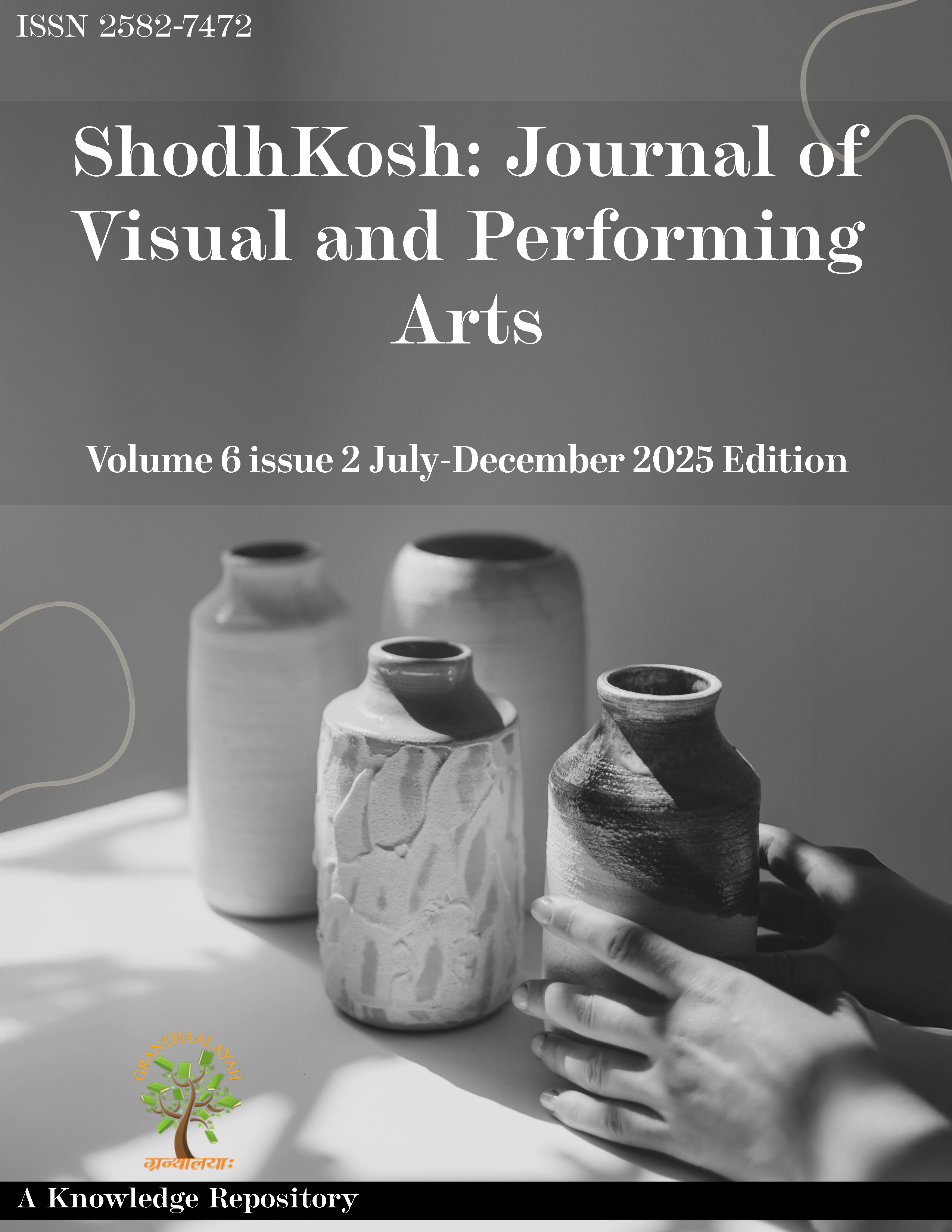STORYBOARDING AS A PEDAGOGICAL TOOL: FOSTERING LANGUAGE, LITERACY, AND CREATIVITY THROUGH VISUAL NARRATIVES
DOI:
https://doi.org/10.29121/shodhkosh.v6.i2.2025.5700Keywords:
Storyboarding, Digital Storytelling, Visual Narratives, Case Study, Esl LearnersAbstract [English]
Visual storytelling is a powerful tool in literature for fostering emotional influences with students. Innovative methods like visual storytelling transform English language teaching into more engaging and effective. Multimedia learning has become crucial for learning, engaging, and motivating learners with Education 4.0. This study explores the use of storyboarding as a pedagogical tool in English language teaching. By integrating visual narratives, storyboarding enhances students' understanding of literature, fosters creativity, and promotes literacy. The research demonstrates how visual storytelling can engage students, improve comprehension, and develop critical thinking skills. Through qualitative methods, 10 Postgraduate ESL learners were taken for the case study, and semi-structured interviews were conducted, the study highlights the benefits of combining literature and art in the classroom where they study film and media studies in their course, ultimately contributing to a more dynamic and effective learning experience. Results indicate that visual storytelling using storyboards improves communication skills, motivation, and engagement and enhances students' learning experiences, making learning more interactive and enjoyable.
References
Anderson, M. (2016). Creativity in education: Enhancing creative skills through visual narratives. Journal of Educational Innovation, 32(4), 220-234.
Atta-Alla, M. (2012). Integrating language skills through storytelling. English Language Teaching, 5(12), 130-142. DOI: https://doi.org/10.5539/elt.v5n12p1
Batsila, M., & Tsihouridis, C. (2016). Creativity and digital storyboards: Engaging students in interactive English language learning. Journal of Educational Technology, 32(4), 66-79.
Brown, R. (2015). Visualizing literature: Storyboarding in English classes. Language Arts Journal, 27(3), 150-165.
Clark, A. (2019). From storyboards to stories: The writing process made visual. Educational Writing Review, 34(2), 180-195.
Doe, J. (2021). Bridging the gap: Integrating visual and textual learning through storyboarding. Pedagogical Perspectives, 41(1), 35-50.
Garcia, S., & Baker, L. (2018). Language learning through visual narratives. International Journal of Language Studies, 29(2), 112-126.
Ghafar, Z., et al. (2023). Promoting critical reflection through storyboarding in education. Educational Research Journal, 45, 45-56.
Jones, K. (2014). Narrative skills development through storyboarding. Educational Research and Reviews, 39(1), 75-89.
Mart, C. T. (2012). The use of storytelling in teaching English to young learners. Language Teaching and Educational Research, 1(1), 10-13.
Morsali, S. (2016). The role of story recalling in EFL contexts. Journal of Applied Linguistics and Language Research, 3(5), 75-85.
Nguyen, H. T., et al. (2014). Storytelling as an innovative approach to enhance language learning. Journal of Language Teaching and Research, 5(1), 30-36.
Sánchez-Carrero, J. (2011). Media literacy for children: Understanding character profiles and content transmission. Journal of Media Education, 18(3), 89-102.
Smith, H., & Evans, R. (2017). Literacy and visual learning: The power of storyboarding. Reading Teacher, 48(3), 145-160.
Thompson, J., & Green, P. (2020). Interdisciplinary teaching with storyboards: Visualizing knowledge. Teaching Innovation Quarterly, 37(2), 95-110.
Wahid, R., & Aziz, A. (2022). Fostering motivation and confidence through visual narratives in education. International Journal of Pedagogical Studies, 12, 12-20.
Yahia, I., & Egbert, J. L. (2023). Supporting non-native-English speaking graduate students with academic writing skills: A case study of the explicit instructional use of paraphrasing guidelines. Journal of Writing Research, 14, 305-341. DOI: https://doi.org/10.17239/jowr-2023.14.03.01
Downloads
Published
How to Cite
Issue
Section
License
Copyright (c) 2025 Dr. S. Sangeetha

This work is licensed under a Creative Commons Attribution 4.0 International License.
With the licence CC-BY, authors retain the copyright, allowing anyone to download, reuse, re-print, modify, distribute, and/or copy their contribution. The work must be properly attributed to its author.
It is not necessary to ask for further permission from the author or journal board.
This journal provides immediate open access to its content on the principle that making research freely available to the public supports a greater global exchange of knowledge.































